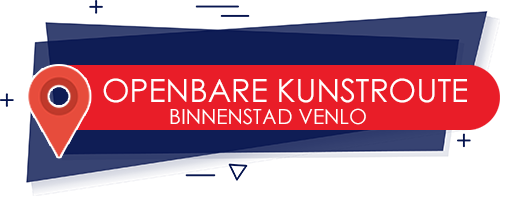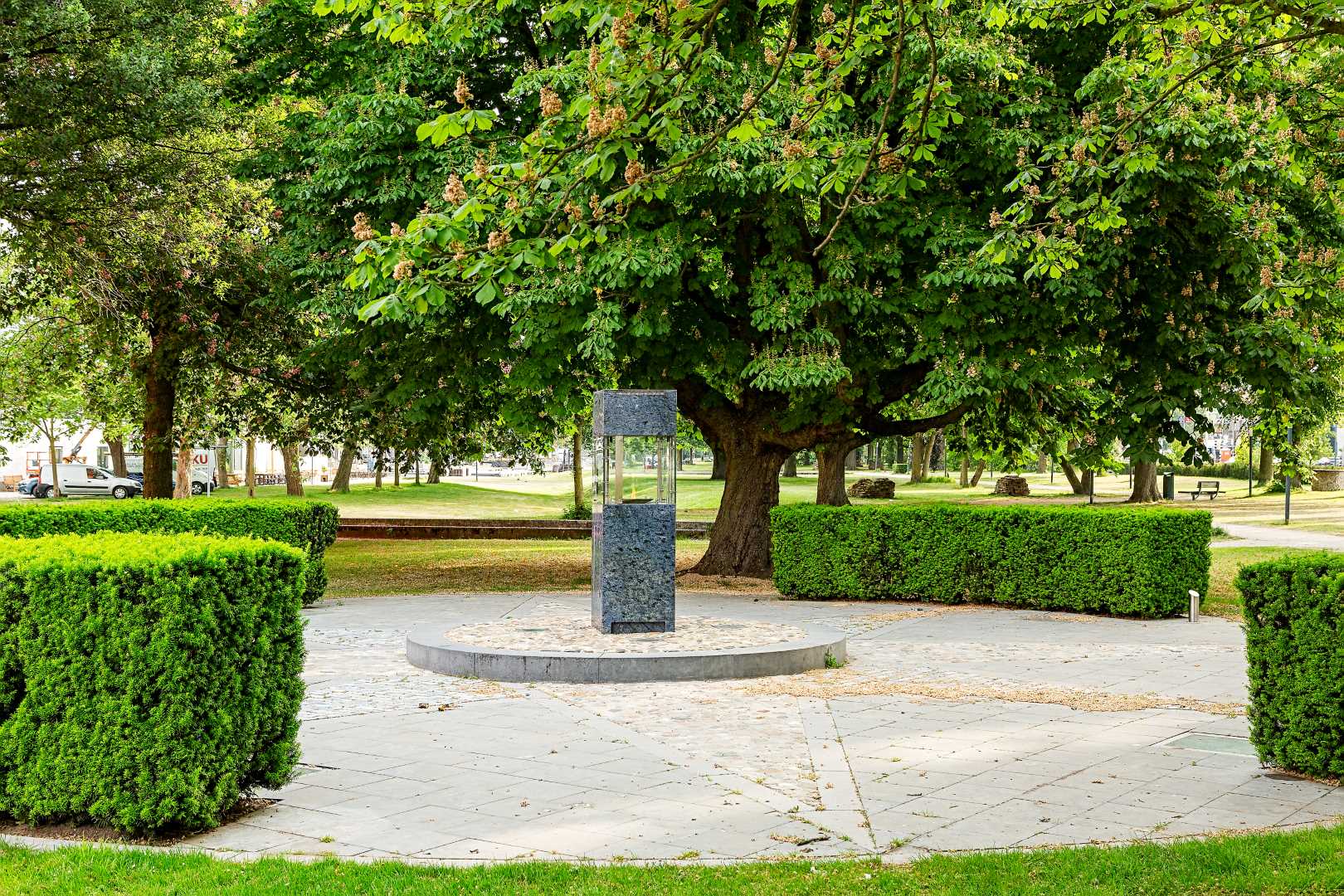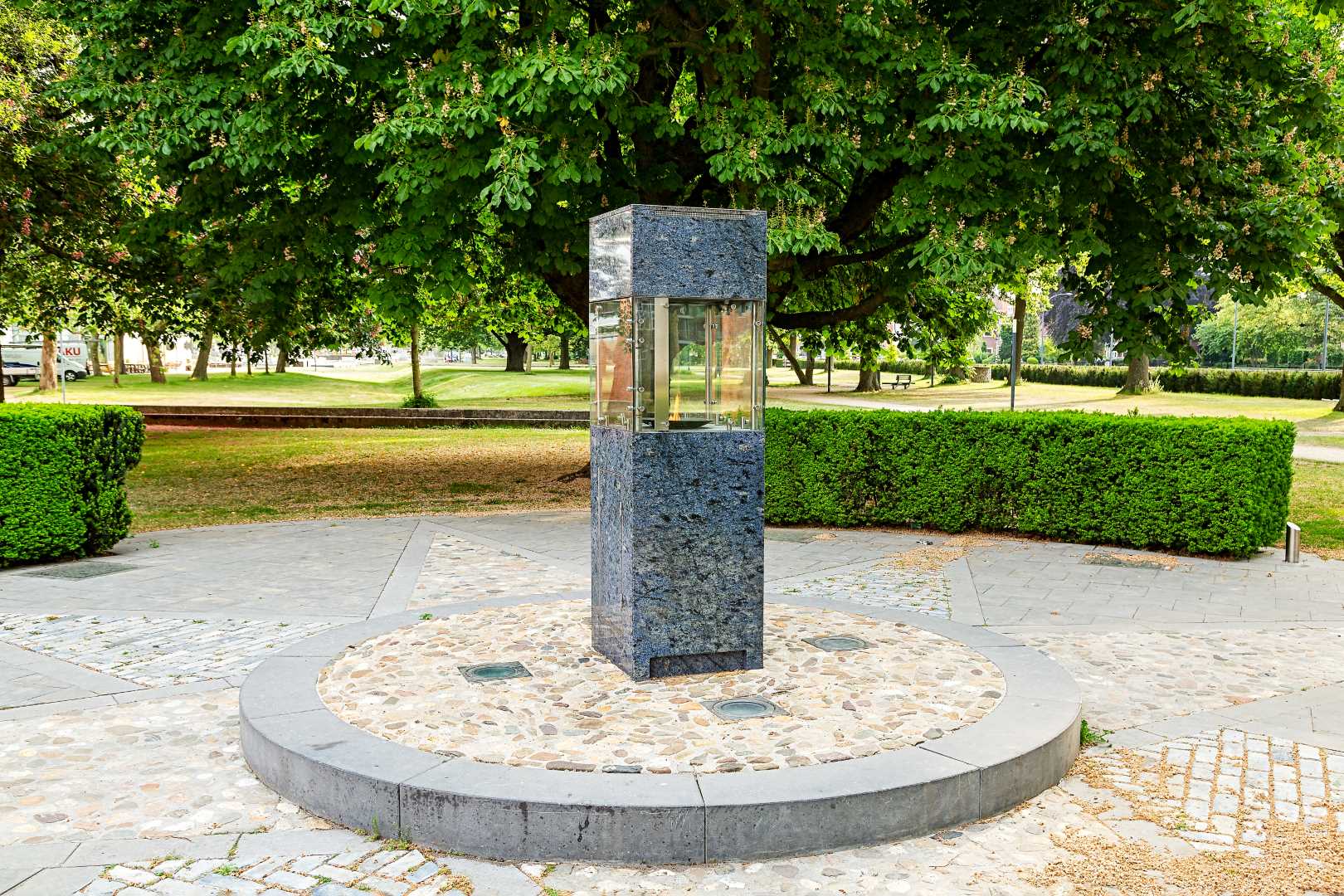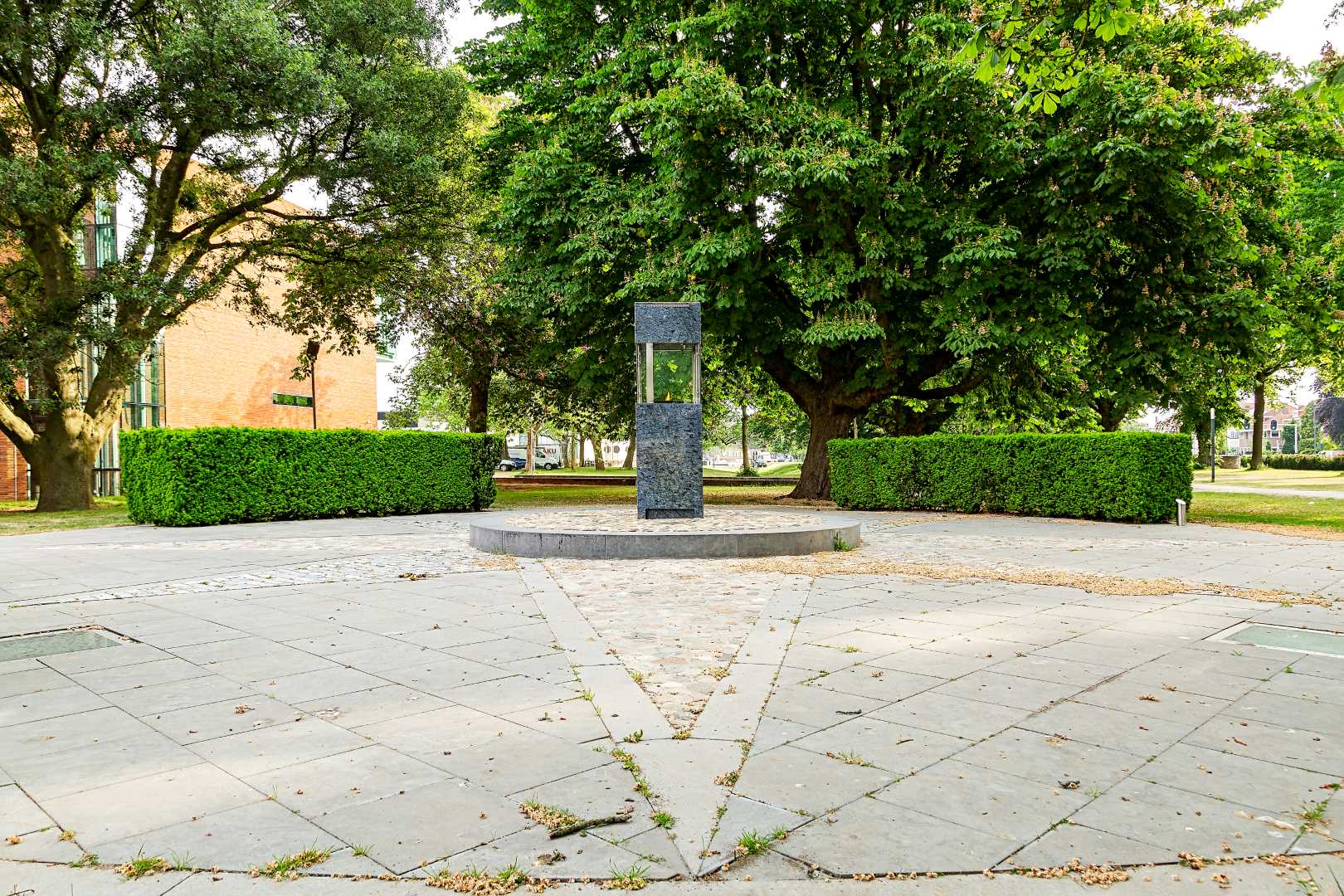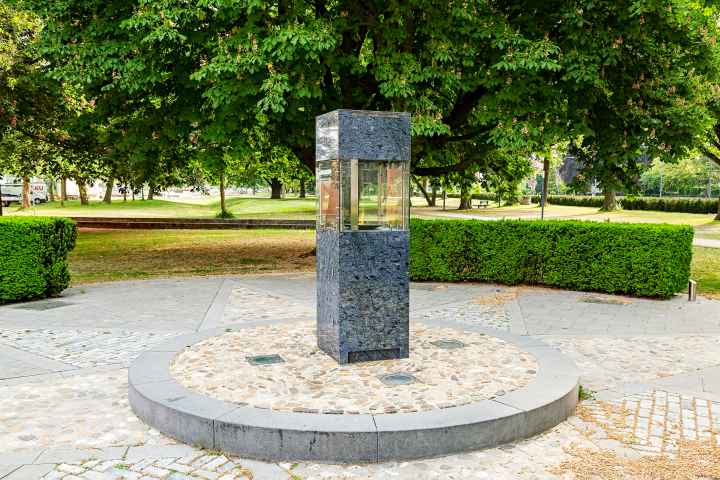Peace Flame
Juliana Park
Peace flame – Frans van Nieuwenborg (in collaboration with Suzan Faessen)
Since 2005, you can find The peace flame at the back of the Limburgs Museum in the Julianapark . The work of art consists of a natural stone column, partly glazed, containing the peace flame. It was placed as a remembrance sign after the death of René Steegmans in 2002. Steegmans spoke to two young people on a scooter at a Venlo supermarket, who nearly knocked down an elderly woman. He was then beaten up to such an extent that he died of his injuries two days later.
In a more general sense, the peace flame is also seen as a monument of hope and trust and a place for reflection.
The artists: Frans van Nieuwenborg
Frans van Nieuwenborg was born in Venlo in 1941.After his studies at the Academy for Industrial Design in Eindhoven (the present Design Academy) he worked in Denmark for various designers and architects for several years. In 1973 he started his own design agency ‘Van Nieuwenborg Industrial Design Consultancy Group’ in Leiden. One of his specialties is designing special light objects.
Van Nieuwenborg believes that design goes beyond “just designing”. Not only the material needs to be designed, but also the emotion. He regularly seeks cooperation and dares to step outside of the box.
The Juliana Park
A group of men playing petanque, young people playing, people lazing in the shade of a tree or sitting on a bench reading a book. As soon as the weather gets good, Julianapark is a place of meeting. For example, during the festivals that take place there in the summer months, such as the culinary event Lekker Venlo, dance event Stereo Sunday and the now famous Zomerparkfeest. The spot we now know as Julianapark, adjacent to Keulsepoort, is the spot where one of the four city gates in Venlo’s fortifications once stood.
Just outside the Keulsepoort, until the nineteenth century, was a location called the Elysian Fields. From 1875, it was the location of the shunting yard of the Köln-Mindener Bahn, an international railway connection between Hamburg and Paris with a stop in Venlo. Therefore, in that period, the road west of the park was called Hamburgersingel. After the war, it was changed to Deken van Oppensingel, after Dean Jules van Oppen, who died during the war as a resistance fighter in Camp Vught.
The people of Venlo also called the road Ponywaeg. There could be two explanations for this. In line of the road there used to be the Pope factory. The young ladies who worked there were the first in Venlo to have their hair cut in a Pony style. Another explanation could be that the hussars – stationed in Venlo between 1816 and 1913 – took their horses (Ponies) out on the Hamburgersingel.
In 1971, the Van Bommel van Dam Museum opened its doors in Julianapark, nowadays located in the former post office at the Keulsepoort. Since 2000, the Limburgs Museum has also been part of the park. After the departure of van Bommel van Dam, Foodhall MOUT settled in the drastically renovated museum building in 2022.
In Julianapark there are several works of art and also some parts of the former fortress walls, of which a part has been preserved underground.
